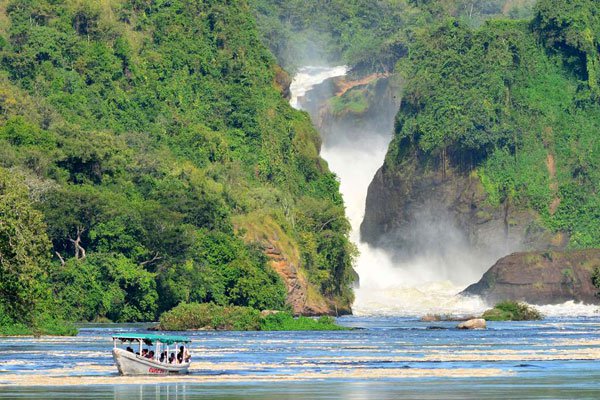
South Africa’s Bonang Power and Energy has been courting Ugandan elite and seeking hydropower contracts at least from 2015. Thus its web-site refers to official report of the Uganda State Palace on talks between the country’s President Yoweri and a delegation of an International Consortium of Companies from Russia and South Africa on May 29, 2015. The Russian based energy company – Gidroenergostroy (the RwB failed to identify specific company involved), along with Bonang Power and Energy Ltd from South Africa, were expected to establish additional generating capacity of 200 to 300 MW from Kiira 2 Hdro-Power Station as well as securing the long term sustainable operation of Nalubaale Hydro-Power Station with increased capacity, among others. Generation on those plants was reported in 2006-7 as main factor causing water level drop in Lake Victoria.
In June, Bonang had applied for a permit for a feasibility study to develop a 360 megawatt power plant on the Nile at Murchinson Falls, according to a notice issued by the Electricity Regulatory Authority (ERA). This caused wide public protest. Private tourism operators and nature enthusiasts immediately mounted opposition to the project saying the falls were one of the country’s most prized geographical features and a lucrative tourism site.
According to Reuters, at the end of August Uganda said on Wednesday that due to the importance of its famed Murchison Falls as a lucrative tourism attraction it had rejected a hydropower project proposed by South Africa’s Bonang Power and Energy. The falls lend their name to a 3,900-square-km national park, one of Uganda’s biggest, where visitors can view lions, hippos, elephants, buffalos and giraffes.
Uganda’s cabinet decided to reject the project at its meeting on Monday, August 26, said state minister for tourism Godfrey Kiwanda. “Cabinet rejected the idea entirely. Cabinet is of the view that Murchison Falls is one of the country’s great wonders,” he told Reuters.
“When we considered what we make out of the falls in terms of tourism earnings it was very clear it’s more valuable keeping it (Murchison Falls) as a tourism site,” Kiwanda said.
ERA, he said, had been directed not to allow the feasibility study to proceed.
Located on the River Nile between the Ugandan lakes Kyoga and Albert, Murchison Falls lies about 280 km northwest of the capital Kampala.
President Yoweri Museveni’s government in recent years has been eagerly wooing foreign private power developers, especially in the hydropower sector, to invest in the country and help boost its generation capacity.
Uganda’s total generation capacity stands at about 1000 MW but is set to expand substantially when a 600MW plant on the Nile, Karuma, being developed by China’s Synohydro, is commissioned next year. The plant is being financed by debt from China which has also financed, via credit, the Isimba hydropower plant launched last year. The current contribution of hydropower in Uganda’s electricity generation mix is 87 per cent. This figure will go up to 92 per cent once Karuma is commissioned.
Other large hydropower plants being packaged for development include Ayago (840 MW), Orianga (392 MW), Uhuru (350 MW) and Kiba (290 MW). Regarding small hydropower projects, the current policy is that their development is undertaken by the private sector. The Renewable Energy Feed-in Tariffs (REFiT) are in place to promote investment in small hydropower and other renewable power projects.
Many observers contrast this responsible behavior of the Uganda with reckless actions of the Tanzania President, who ordered to build a Rufiji Hydropower Plant in the middle of the Selous Game Reserve – a UNESCO World Heritage Site.

